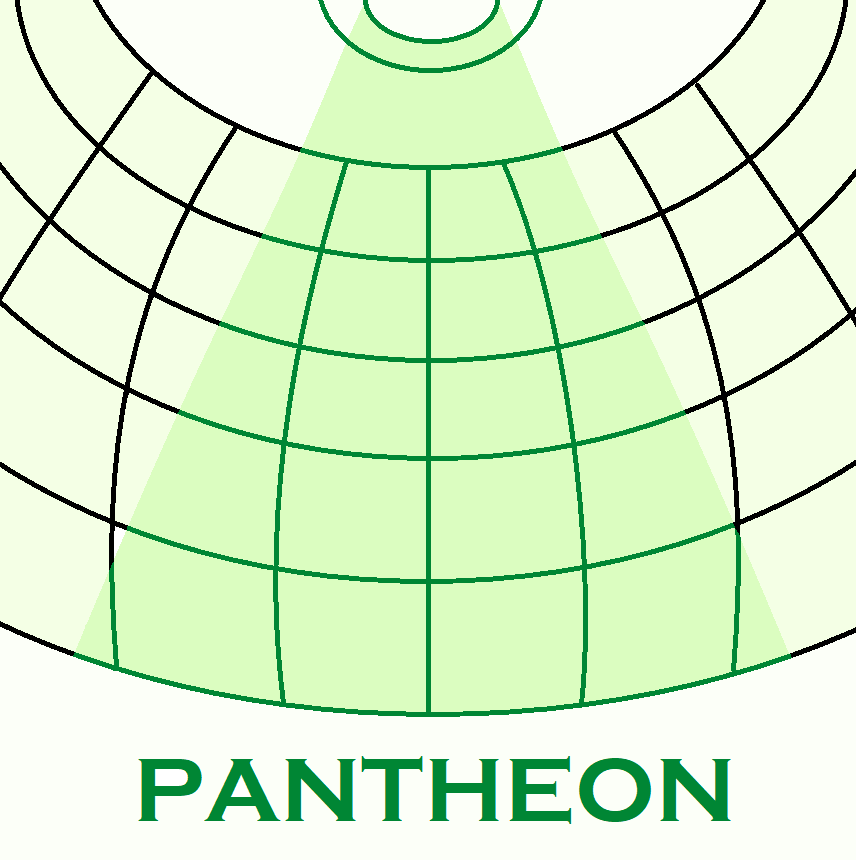Deliverable 4.1
Policy Discourse Network Analysis Results
Themes and Stakeholders Discourse Network
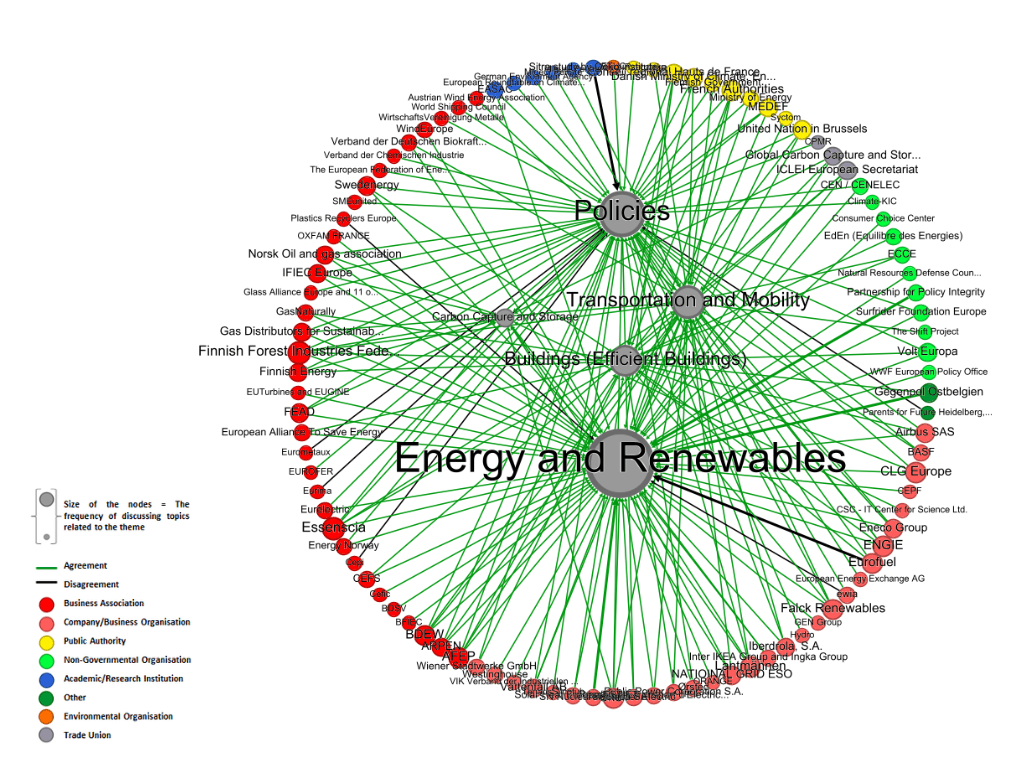
This Bipartite Theme x Stakeholders network encompasses five themes: Energy and Renewables, Policies, Buildings, Transport, and Carbon Capture. The “Energy and Renewables” theme garnered the most discussion, followed by topics related to policies, buildings, transport, and carbon capture. The graph demonstrates the dominance of business stakeholders, a crucial factor to consider when interpreting the network dynamics.
1. Building Theme vs Stakeholders Discourse Network
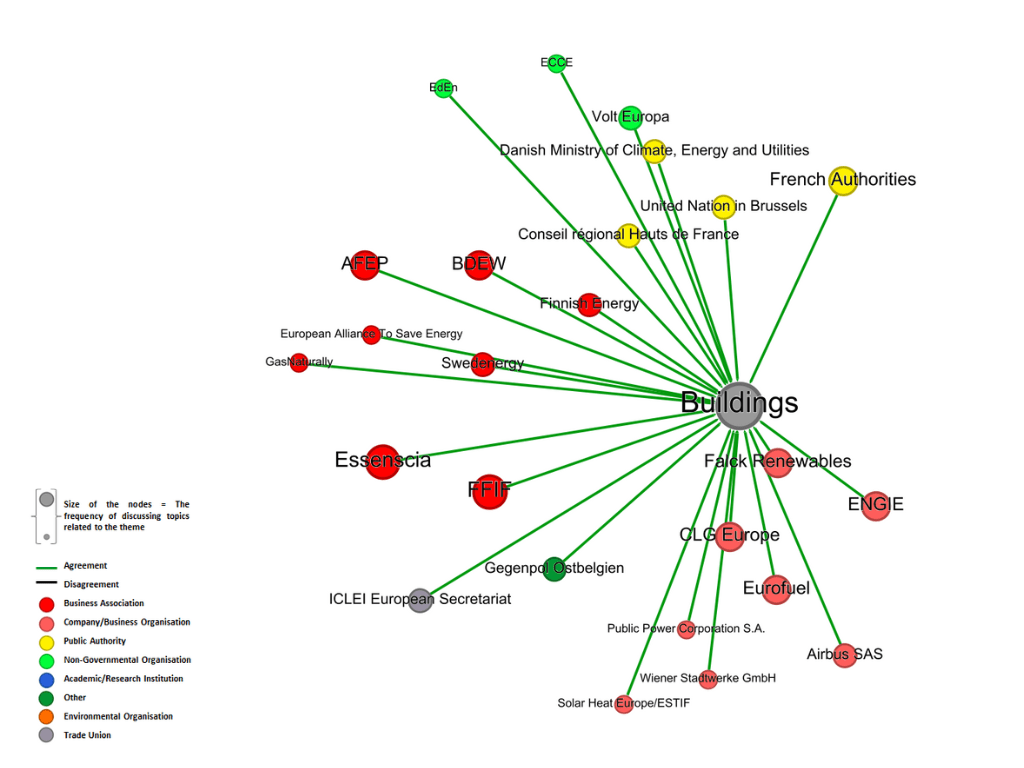
The graph reveals stakeholders involved in discussions about the Building theme, with node size indicating discussion frequency. While businesses dominate the overall network, a notable presence of public authorities suggests active engagement in building-related topics.
1.1. Building Topics vs Stakeholders Discourse Network
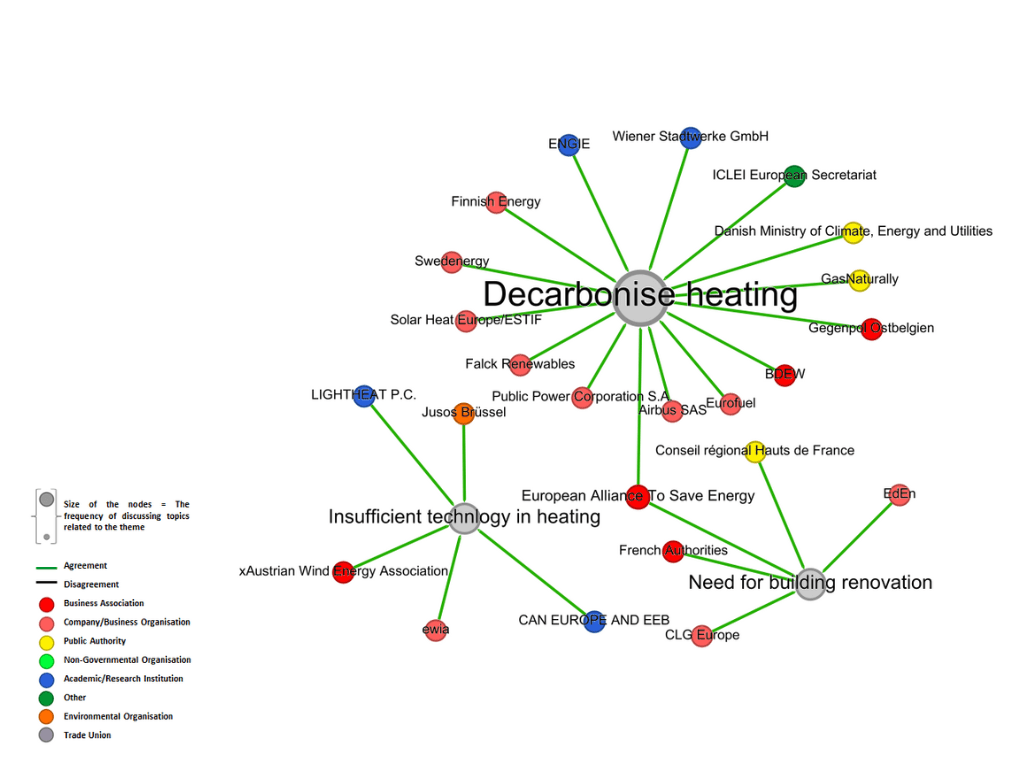
The network highlights topics regarding decarbonizing buildings. Decarbonizing heating is a central topic, with strong participation from business actors (red and salmon pink tones) such as BDEW, ENGIE, and Falck Renewables, showing industry interest in clean heating solutions. Building renovation also sees contributions from both public authorities (yellow) and business actors, reflecting a shared focus on improving energy efficiency.
Discussions on insufficient technology in heating involve fewer stakeholders, including NGOs (green tones) like CAN Europe and EEB, raising concerns about technological gaps. Overall, the network shows broad consensus on heating decarbonization and building efficiency, with limited disagreement. However, challenges like technological limitations in heating may require further innovation and collaboration to address.
2. Carbon Capture Theme vs Stakeholders Discourse Network
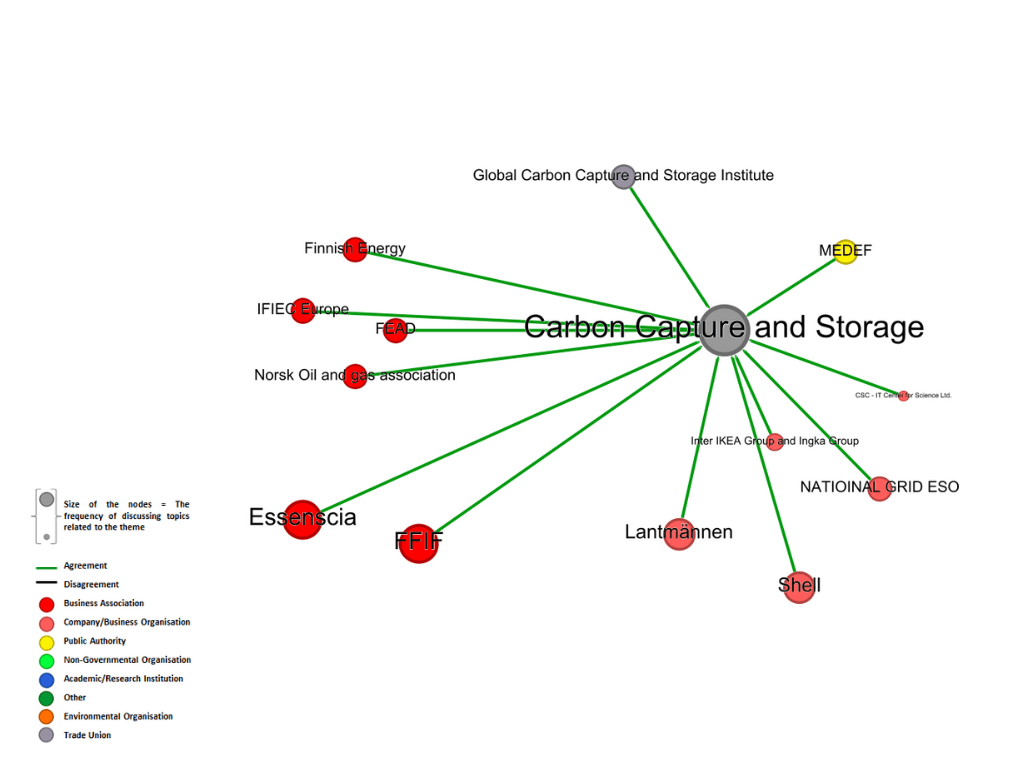
The graph reveals stakeholders involved in discussions about the Carbon Capture theme, with node size indicating discussion frequency. Business associations and companies dominate the overall network.
2.1. Carbon Capture Topics vs Stakeholders Discourse Network
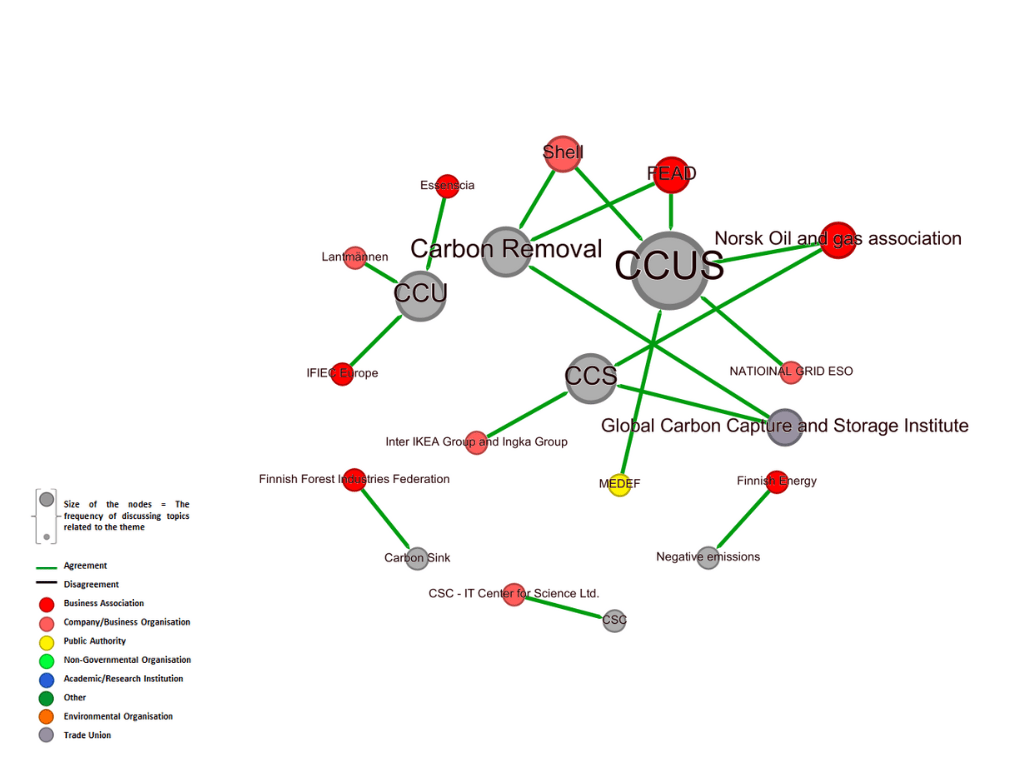
The graph indicates that the discussion on carbon capture related topics like carbon removal, negative emissions, and etc is dominated by business-related actors (red and salmon pink tones).
Key industrial participants include Norsk Oil and Gas Association, Shell, and Finnish Energy, Essenscia and National Grid ESO, which suggest that the topic is primarily driven by industry interests, likely reflecting their focus on technological solutions for achieving decarbonization targets.
The lack of participation from NGOs, public authorities, and other non-business actors highlights a narrow scope of engagement, potentially limiting the diversity of perspectives in these discussions. While CCUS and carbon removal are central topics, peripheral nodes like carbon sinks suggest areas that are less developed or less discussed within this group.
3. Energy Theme vs Stakeholders Discourse Network
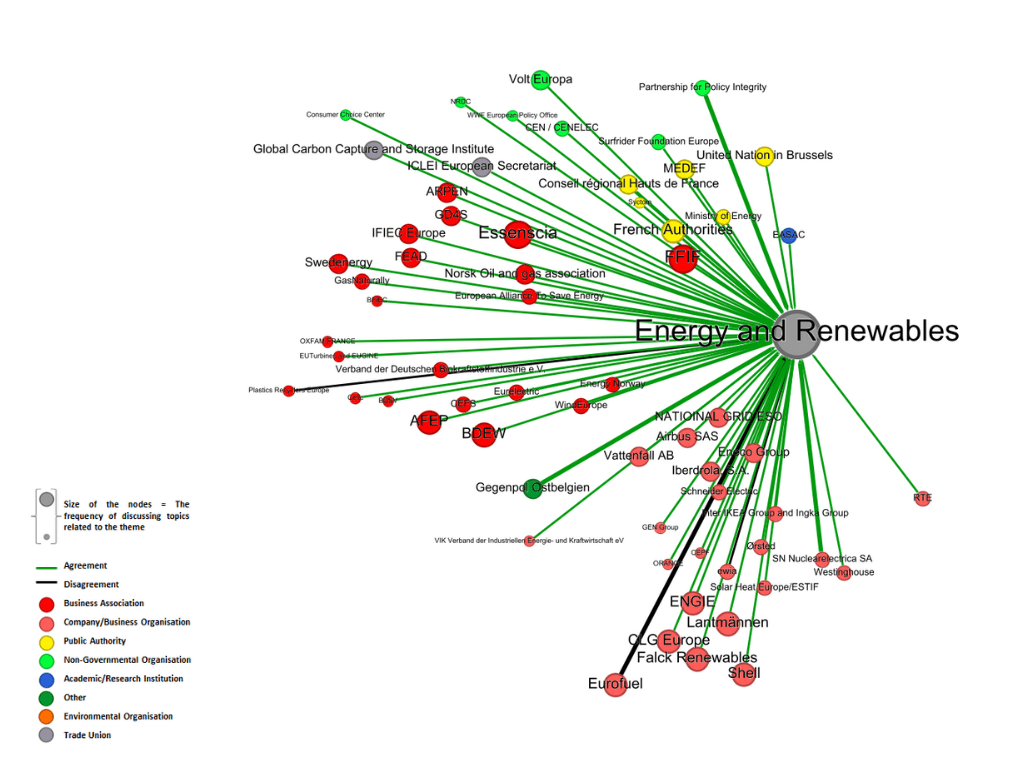
The graph reveals stakeholders involved in discussions about the Energy theme, with node size indicating discussion frequency. The network sees a concerted involvement by multiple stakeholder types, including Companies, Business Associations, Public Authorities and NGOs. Less relevant is the contribution from other stakeholders, such as Research Institutions.
3.1. Energy Topics vs Stakeholders Discourse Network
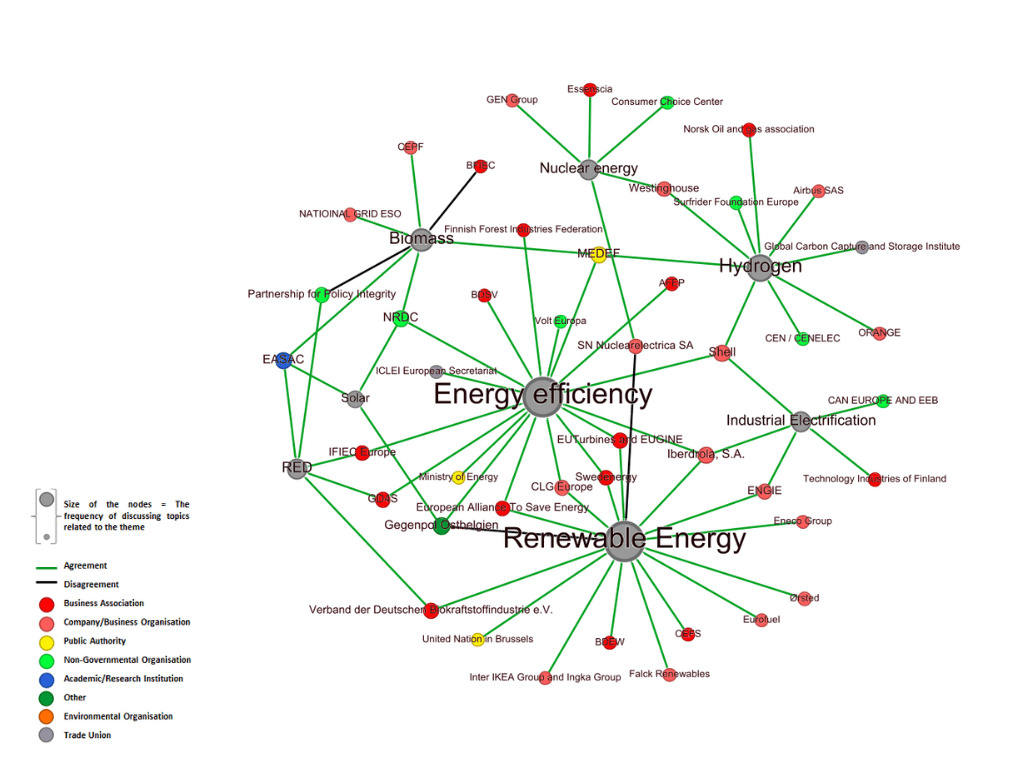
The discourse network shows that business actors (red and salmon pink) are well represented. Overall, there’s low disagreement across the network, but it’s still important to note areas of contention. For example, in biomass, arguments that forest-burning biomass should not be considered a decarbonization method suggest it could become a potential area for polarization.
NGOs (green tones) actively support topics like renewable energy and energy efficiency, contributing to discussions around sustainability. We also observe that while energy efficiency and renewables are central to the discourse, topics like nuclear energy and biomass remain more peripheral. Those actors who agree to renewable energy was one was overly discussed renewable energy over nuclear energy, Gegenpol Ostbelgien (Not CEPI) is against renewable energy as supply is unstable and insufficient.
4. Policy Theme vs Stakeholders Discourse Network
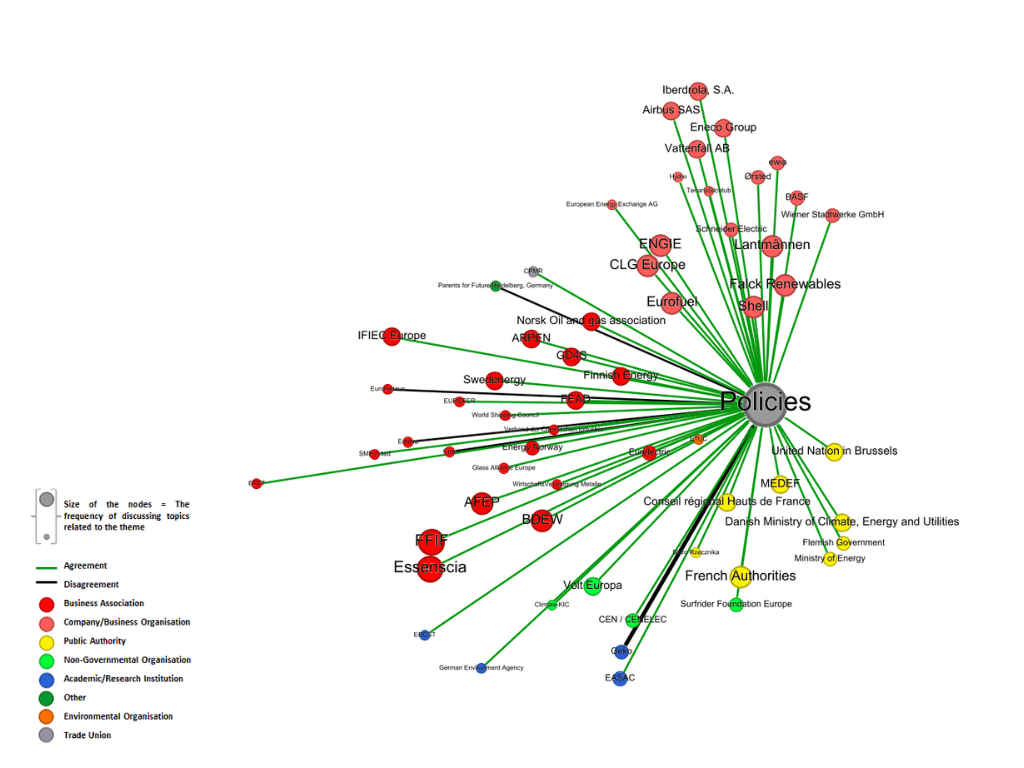
The graph illustrates the connections between a variety of stakeholders involved in discussions around decarbonization policies. Black edges indicate disagreements on topics within policy themes. Thicker lines represent more frequent disagreements made by an actor.
4.1. Policy Topics vs Stakeholders Discourse Network
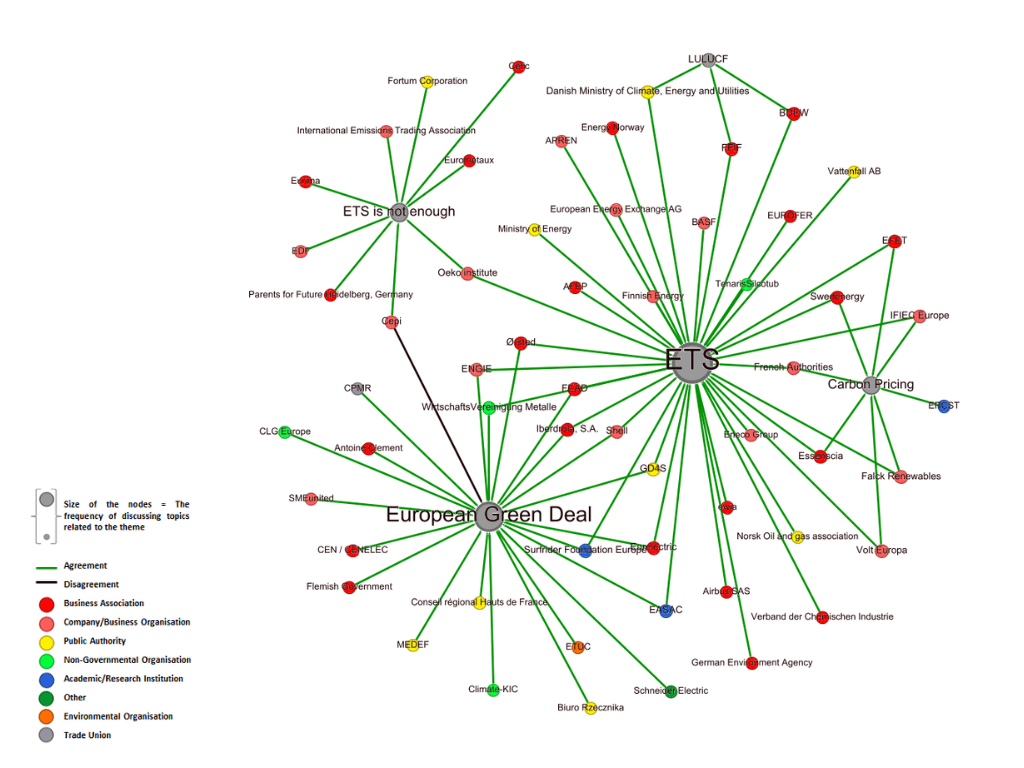
The network highlights carbon pricing and ETS as central topics, with strong participation from business actors (red and salmon pink), public authorities (yellow), and NGOs (green). While many actors support ETS, the argument that “ETS is not enough” reveals an area of disagreement, particularly among business stakeholders, indicating differing views on its effectiveness. Discussions on LULUCF and the European Green Deal are more peripheral, with fewer connections. Business actors dominate the discourse, particularly around market-based solutions like ETS and carbon pricing, showing their key role in shaping climate policy.
Overall, the network demonstrates active engagement from business actors but also highlights areas of contention regarding the adequacy of current decarbonization measures.
5. Transport Theme vs Stakeholders Discourse Network
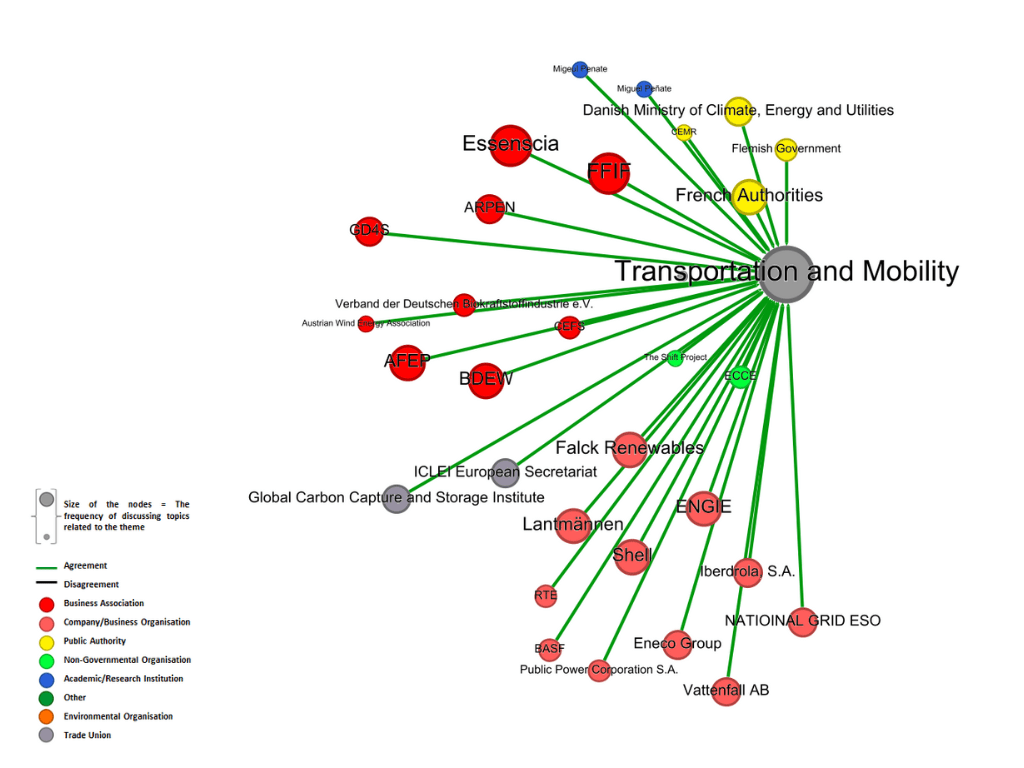
The network illustrates the connections between a variety of stakeholders involved in discussions around Transport and Mobility implications of decarbonization.
Companies, Business Associations and Public Authorities results as the most represented stakeholders within the network. To a lesser extent, other actors such as NGOs, Trade Unions, Research Institutions are involved in the discourse on this theme.
5.1. Transport Topics vs Stakeholders Discourse Network
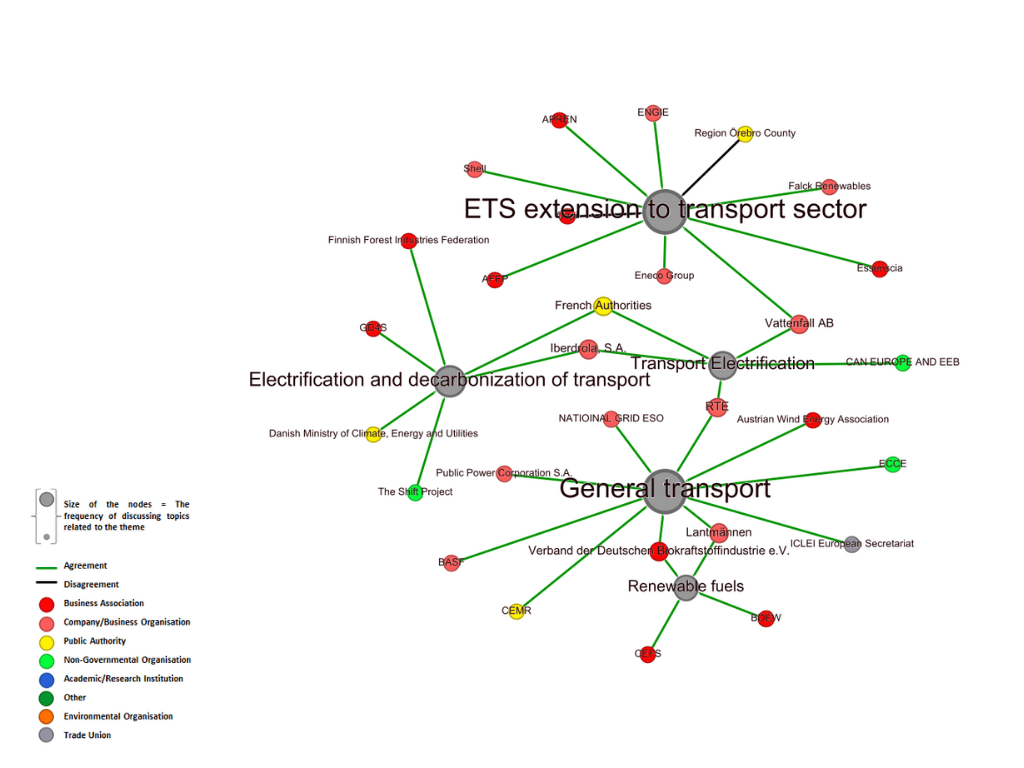
The graph highlights transport electrification and the broader decarbonization of transport as core topics, with a good level of stakeholder engagement. Transport infrastructure for CO₂ storage and renewable fuels appear as more peripheral topics with fewer connections.
There are two instances of disagreement regarding the extension of ETS to the transport sector, which may signal a potential area of conflict. However, overall, the network shows a fairly balanced participation across stakeholder groups, with contributions from business actors, NGOs, public authorities, and others.
This balance, along with the few areas of disagreement, shows there is generally broad consensus on decarbonization goals, but specific topics—like the ETS extension—stand out as areas that may need further discussion to address differing views.
